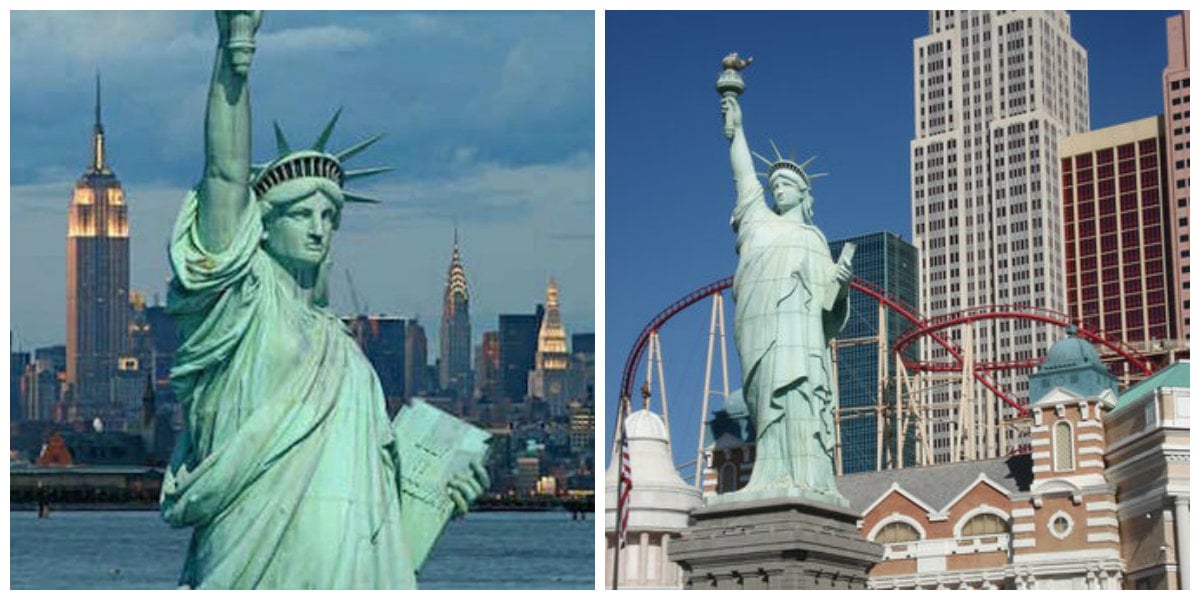USPS Lady Liberty Likeness Stamp SNAFU Garners $3.5M Copyright Infringement Judgment
Posted on: July 5, 2018, 04:00h.
Last updated on: July 6, 2018, 08:30h.
Visit the New York-New York Casino in Las Vegas, and you’ll be treated to Lady Liberty, a smaller, but still impressive, replica of the original Statue of Liberty. It looks somewhat similar to the original — so similar, in fact, that the US Postal Service used a photo of it rather than one of the real deal that’s been ensconced in New York Harbor, greeting immigrants, since the French presented it as a gift to America in 1886.

The United States Postal Service wanted the iconic image for one of its “forever” stamps that remain good for first-class postage even when rates go up, but it forgot to do its due diligence.
Now Robert Davidson, the artist who created the new York-New York Lady Liberty statue, has been awarded more than $3.5 million by a Federal judge in a copyright infringement lawsuit Davidson had brought against the USPS.
Seek and Ye Shall Find…the Wrong Image
The case revolved around a stamp that was first issued in December 2010. The USPS says it created the stamp believing that the image the service had used was that of the original Statue of Liberty.
In fact, it had been selected from a stock photo database by USPS manager Terry McCaffrey, and showed the Las Vegas replica version instead. In March 2011, the USPS was alerted to this fact by an employee at stock photography company Sunipix.
By then, billions of the stamps using Davidson’s version had already been released. After learning about the situation, Davidson copyrighted his work, then filed a lawsuit for infringement in the US Court of Federal Claims in November 2013.
The stamp was a popular one, with 4.9 billion being sold. The Postal Service made about $71 million in profit on the $2.1 billion in sales of the issued stamp.
Sexy Lady
The USPS argued that the replica statue contained “no truly original work,” and as such, maintained that Davidson wasn’t entitled to any compensation. The Postal Service had paid $1,200 to Getty Images for the license to use the photo selected by McCaffrey.
But it may have been the fact that the statues aren’t identical at all that led McCaffrey to pick that photo. According to court documents, his goal had been to pick an image that “was very different from anything we’ve done before.”
Davidson, who created the Lady Liberty statue for MGM Resorts in 1996, fit the bill with his slightly sassier Lady. In court documents, he said that his statue’s face is “a little more modern, little more feminine” than the original, and that he took inspiration from a photo of his mother-in-law. A small plaque in her memory can be found on the crown of the statue.
Lawyers for Davidson even argued that his version was more “sultry” and “sexier” than the original Statue, which stood as a beacon of hope for millions of mostly European immigrants at the turn of the 20th century.
Federal Judge Eric Bruggink agreed, finding the differences between the two fairly obvious.
“The government points to the fact that the Postal Service did not notice the difference between the two faces itself until notified months after producing many millions of stamps,” Bruggink wrote in his opinion. “This is nonsense.”
Davidson lawyer Todd Bice told the Las Vegas Review-Journal that he expects the Postal Service to appeal the decision. A spokesperson for the Postal Service told the Associated Press that officials were currently reviewing the situation.
This was not the first time that the USPS has been accused of misusing artwork for its stamps. In 2015, a federal court awarded $540,000 to artist Frank Gaylord, whose sculpture appeared on a Korean War stamp without his permission.
No comments yet